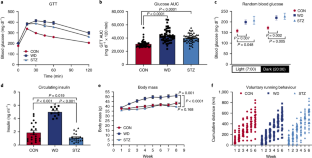2024-09-17 バッファロー大学(UB)
<関連情報>
- https://www.buffalo.edu/news/releases/2024/09/UB-study-hypervirulent-Klebsiella-pneumoniae-drug-resistant.html
- https://www.thelancet.com/journals/ebiom/article/PIIS2352-3964(24)00338-4/fulltext
- https://journals.asm.org/doi/10.1128/mbio.02867-23
高病原性肺炎桿菌(Klebsiella pneumoniae)における遺伝的要素の相対的重要性を解読し、対策開発の指針を得る Deciphering the relative importance of genetic elements in hypervirulent Klebsiella pneumoniae to guide countermeasure development
Thomas A. Russo ∙ Ulrike Carlino-MacDonald∙ Zachary J. Drayer∙ Connor J. Davies∙ Cassandra L. Alvarado∙ Alan Hutson∙ et al.
eBioMedicine Published: August 26, 2024
DOI:https://doi.org/10.1016/j.ebiom.2024.105302

Summary
Background
Quantitating the contribution of phenotype-responsible elements in hypervirulent Klebsiella pneumoniae is needed.
Methods
Isogenic mutants of four hypervirulent clinical isolates that produced K1 (ST23), K2 (ST86), K20 (ST1544), or K54 (ST29) capsules (mean 2.2 log10 LD50 (range 1.5–2.9)) were created to measure the effects on LD50 in a murine model of the hypervirulence-associated plasmid (pVir), iucA, prmpA, prmpA2 (truncated), irp2, and clbBC.
Findings
Curing pVir had the greatest increase in survival (mean LD50 to 7.6 (range 7.0–9.0, p ≤ 0.0001), a dosage comparable to classical K. pneumoniae. Results also showed increased mean LD50s for ΔprmpA (5.9, p ≤ 0.0001), ΔiucA (3.6, p ≤ 0.0001), Δirp2 (3.4), ΔrmpAΔiucA (6.3, p ≤ 0.0001), and ΔpVirΔirp2 (8.7, p ≤ 0.0001). Notably ΔpVir had an additional mean LD50 increase of 1.3 compared to the pVir-encoded ΔprmpAΔiucA (p ≤ 0.01), suggesting presence of additional pVir-virulence genes. Truncated pRmpA2 did not contribute to virulence. Odd ratios in the absence of pVir/yersiniabactin, pVir, pRmpA/aerobactin, pRmpA, aerobactin, yersiniabactin, and colibactin demonstrated a 250-fold, 67-fold, 20-fold, 16.7-fold, 9.6-fold, and 1.7-fold decrease in lethality respectively.
Interpretation
These data can guide countermeasure development.
Funding
This work was supported by NIH R21 AI123558-01 and 1R21AI141826-01A1 (Dr. Russo) and the Department of Veterans Affairs VA Merit Review (I01 BX004677-01) (Dr. Russo). This study was also partially funded by the U.S. Defense Health Program (DHP) Operations and Maintenance.
後天性薬剤耐性を示す高病原性肺炎桿菌と古典的肺炎桿菌の鑑別Differentiation of hypervirulent and classical Klebsiella pneumoniae with acquired drug resistance
Thomas A. Russo, Cassandra L. Alvarado, Connor J. Davies, Zachary J. Drayer, Ulrike Carlino-MacDonald, Alan Hutson, Ting L. Luo,…,Francois Lebreton
mBio Published:17 January 2024
DOI:https://doi.org/10.1128/mbio.02867-23

ABSTRACT
Distinguishing hypervirulent (hvKp) from classical Klebsiella pneumoniae (cKp) strains is important for clinical care, surveillance, and research. Some combinations of iucA, iroB, peg-344, rmpA, and rmpA2 are most commonly used, but it is unclear what combination of genotypic or phenotypic markers (e.g., siderophore concentration, mucoviscosity) most accurately predicts the hypervirulent phenotype. Furthermore, acquisition of antimicrobial resistance may affect virulence and confound identification. Therefore, 49 K. pneumoniae strains that possessed some combinations of iucA, iroB, peg-344, rmpA, and rmpA2 and had acquired resistance were assembled and categorized as hypervirulent hvKp (hvKp) (N = 16) or cKp (N = 33) via a murine infection model. Biomarker number, siderophore production, mucoviscosity, virulence plasmid’s Mash/Jaccard distances to the canonical pLVPK, and Kleborate virulence score were measured and evaluated to accurately differentiate these pathotypes. Both stepwise logistic regression and a CART model were used to determine which variable was most predictive of the strain cohorts. The biomarker count alone was the strongest predictor for both analyses. For logistic regression, the area under the curve for biomarker count was 0.962 (P = 0.004). The CART model generated the classification rule that a biomarker count = 5 would classify the strain as hvKP, resulting in a sensitivity for predicting hvKP of 94% (15/16), a specificity of 94% (31/33), and an overall accuracy of 94% (46/49). Although a count of ≥4 was 100% (16/16) sensitive for predicting hvKP, the specificity and accuracy decreased to 76% (25/33) and 84% (41/49), respectively. These findings can be used to inform the identification of hvKp.


